Food Loss Related News
Food Loss Related Publications

Teff: Post-Harvest Operations
14/05/2001
Teff is a staple crop in Eritrea and Ethiopia where it is a native annual grass species but is not widely known around the world. The very small seeds are cooked or fermented and have good nutritional content. The plant is very adaptable to different conditions but is day length sensitive, requiring 12 hours of daylight to flower.

Millet: Post-harvest operations
04/05/2001
Millet is a collective term referring to a number of small-seeded annual grasses that are cultivated as grain crops, primarily on marginal lands in dry areas of temperate, sub-tropical and tropical regions. It is regarded as a subsistence grain grown for food and animal fodder. The largest production is in India and Nigeria. Total world production in 2007 was 31 million tonnes (FAOSTAT).
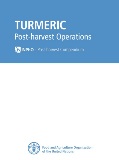
Turmeric | Post-harvest operations
22/04/2001
Turmeric is a rhizome of a perennial herbaceous plant native to South Asia which requires a tropical climate. Southern India is the world’s largest producer. It can be used fresh or dried and ground to a fine powder. It imparts a distinctive flavour but it is also used to provide food with a deep, orange colour. It is an important ingredient in the curry dishes and cuisine of South Asia.
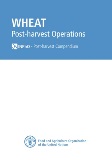
Wheat: Post-Harvest Operations
14/10/1999
Wheat is widely grown around the world under diverse climatic conditions and has been the staple food of the major civilizations in Europe, Asia and North Africa for 8,000 years. As an important staple food used in a wide variety of products, post-production operations play an important role in creating a stable food supply. Wheat is also used to produce animal feedstuffs, starch and ethanol.

Plantain: Post-Harvest Operations
14/10/1999
Plantain is a staple food and major source of carbohydrates for millions of people in Africa, Asia, the Caribbean, Latin America, and the Pacific. The fruit is predominantly used for human consumption and is generally cooked by boiling or frying when mature (green) or ripened. There is great potential for the crop in improved production methods and post-harvest techniques.
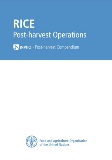
Rice: Post-Harvest Operations
14/10/1999
Rice is a staple food for over half the world's people and has the second largest cereal production after maize with over 685 million tonnes recorded in 2008 (FAOSTAT). China, India, Indonesia and Pakistan are the biggest producers. Rice cultivation requires more water than other cereals and is more labour intensive.
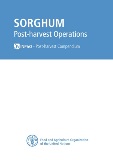
Sorghum: Post-Harvest Operation
14/10/1999
Sorghum is the fifth most important cereal grown with a world production of over 55 million tonnes in 2008 (FAOSTAT). Most varieties are heat and drought tolerant, hence it is an important crop in arid areas. It is an important source of food in Africa, Central America, and South Asia and is also used to produce alcoholic beverages and biofuel.

Coconut | Post-harvest operations
14/10/1999
Coconut, the fruit from the coconut palm tree is widely grown throughout the tropics. The palm trees grow to 30 m and require a continuous frost-free warm climate, plenty of rain and sunlight. India, Indonesia and the Philippines are the largest producers. An adult palm tree will produce coconut fruits every month throughout the year. Young immature coconuts are harvested for coconut water, a nutritious drink, and mature fruits for the white ‘meat’ and oil.

Cassava | Post-harvest operations
14/10/1999
Cassava is an edible root that provides an important source of carbohydrates for an estimated 500 million people in Africa, Asia and the Americas. World production was 230 million tonnes in 2008, with Nigeria as the largest producer followed by Brazil, Thailand and Indonesia (FAOSTAT).
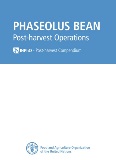
Phaseolus Bean | Post-harvest operations
14/10/1999
Phaseolus Bean or the common bean is the most important food legume for direct consumption in the world and is a major source of dietary protein in many developing countries. It is produced in a range of crop systems and environments in regions as diverse as Africa, Europe, Latin America, the Middle East and United States as well as Canada and China. The beans can be consumed by eating the fresh green pods but are more usually removed from the pods, dried and cooked.

Quinoa: Post-Harvest Operations
06/06/1997
Quinoa (Chenopodium quinoa Wild) is grown in arid and semi-arid areas of the Andes, but it is very adaptable and can be grown at sea level. Its cultivation has spread to more than 70 countries. Quinoa has a protein of high biological value with a high lysine content. It is used both in the human diet and as animal feed. The ripe grain is also consumed, directly or in a processed state.
